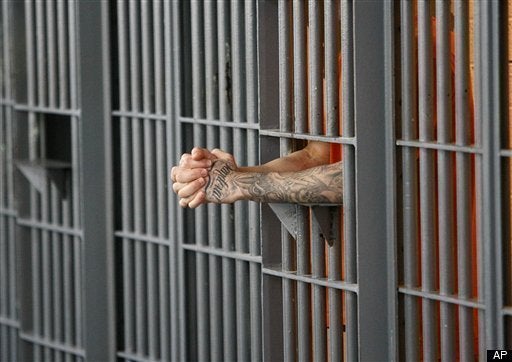
In a recent issue of The New Yorker (January 30, 2012), critic-at-large Adam Gopnik described what he called "The Caging of America." The size of the prison system in the United States is horrific. According to Gopnik:
Mass incarceration on a scale almost unexampled in human history is a fundamental fact of our country today -- perhaps the fundamental fact, as slavery was the fundamental fact of 1850. In truth, there are more black men in the grip of the criminal-justice system -- in prison, on probation, or on parole -- than were in slavery then. Over all, there are now more people under "correctional supervision" in America -- more than six million -- than were in the Gulag Archipelago under Stalin at its height. That city of the confined and the controlled, Lockuptown, is now the second largest in the United States.
Equally horrific are its rapid growth and the direct and indirect costs. Gopnik reports that in 1980 there were about 220 people incarcerated for every 100,000 Americans. The incarceration rate more than tripled during the next 30 years. Today there are over 700 prisoners for every 100,000 Americans. State governments now spend six times as much money on prisons as they do on higher education.
In New York City, the hub of the prison system is Rikers Island with 10 separate jails, a budget of $860 million a year, an inmate population of 14,000, and a staff of 8,500. Rikers Island may be the world's largest penal colony.
The island and prison are located in the East River between the Bronx and Queens right next to LaGuardia Airport runways. They are named after a Dutch settler whose descendants owned the island until it was transformed into a prison by New York City in 1884. During the American Civil War it served as a training ground for the Union Army.
Prisoners on Rikers Island include people awaiting trial who cannot afford or obtain bail and those held without bail. There are also prisoners serving sentences of one year or less or awaiting transfer to other facilities. The only access to the island is over a causeway from Queens. Visitors must pass through repeated checkpoints and once inside are locked up along with the inmates.
Because of the large number of young people age 18 to 22 in the inmate population, Rikers is also home to the Island and Horizon Academies. In February 2011, I was a Black History month speaker for social studies students at the Island Academy. That was my third visit to the island to talk about the history of slavery in New York.
More than 12,000 New York City students are incarcerated every year and attend school behind bars. Currently, there are 53 prison school sites run by New York City. Island Academy on Rikers, founded in 1959, was the country's first high school in a jail and because of high student turn over, it is now primarily a GED preparation program.
At Rikers, classroom attendance is compulsory and an armed security guard is assigned to ever room. The average student reads at a fifth-grade level and almost 50 percent of the students are diagnosed as having special educational needs.
Black and Hispanic youth make up an overwhelming 95 percent of students in New York City jail. An estimated 90 percent of the prison systems youth alumni are re-arrested by the time they're 28.
